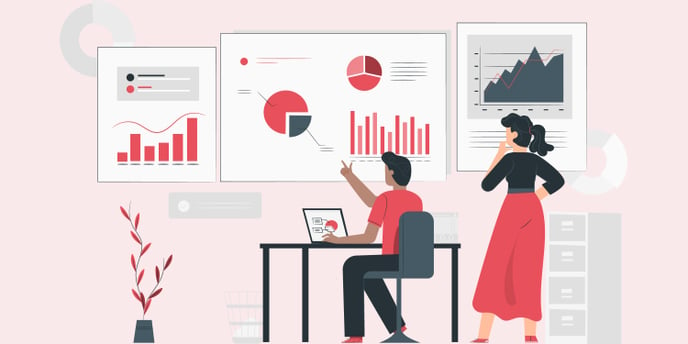
Omnimed provides doctors and staff at clinics working with students, such as GMF-Us, with a series of reports that can be used to extract various relevant statistics, and to supervise students as they are learning to write consultation notes.
List of students for which notes must be submitted to the review process
Context - The clinical notes review process applies to specific cases where, for example, a resident needs to submit his or her clinical notes to a supervising physician for training purposes. To do this, the resident (or the person submitting the notes) must first activate the note review function in his or her Omnimed user profile.
Objective - The report List of students for which notes must be submitted to the review process allows you to ensure that the users at your facility who are subject to the note review process have activated the note review function in their profile. It is an indispensable tool to ensure that everyone is working in accordance with their obligations.
Application - This report lists all non-physician staff in your clinic. It displays, among other information, the user's identity, the date they started using Omnimed and their profession. It also displays, in a column, whether or not the provider has activated the note review feature.
Resident Activity Monitoring (beta)
Context - The supervisor's note review process in Omnimed involves creating and assigning a task associated with a clinical note. Therefore, the visibility of student work requires the opening of individual tasks and the consultation of actions taken in patient files.
Objective - The Resident Activity Monitoring report (beta) allows you to easily monitor the work of students for whom you are responsible for supervising, and provides you at a glance with the status of their consultations as well as your supervising actions. As a complement to the review process in the EMR, this report ensures that nothing is overlooked.
Application - This report displays, for a selected date range, the activities of selected students, including the date the note was created and its author, a clickable link to the patient's file, the reason for consultation, the note's completion status (and the author), as well as the status of the supervision task and to whom it was sent to. This report also presents the list of actions performed during the consultation: prescription of medication, creation of Safir requests and transmission status, creation of clinical tools, as well as actions taken on results.
🕓Please note that this report is generated from our stand-by database. It therefore presents data from the previous day.
Report of SAFIR requests (CRDS, Conseil numérique) with status
Context - A CRDS request created by a resident must be reviewed by a physician before being sent to the CRDS. If the resident does not create a CRDS request review task, there is a risk that the supervisor will not be notified and the request will not be sent to the CRDS.
Objective - The report Rapport des requêtes SAFIR (CRDS, Conseil numérique) avec statut gives you the opportunity to review the list of specialty consultation requests created in your facility, along with their status as sent to the CRDS. We suggest that you review this report regularly as a safety net to ensure that all requests created are transmitted to the CRDS.
Application - This report takes into account requests completed from the Requests section of the Record summary.
Detailed Visit Information
Context - The organization of tasks in different types of clinics, including GMF-Us, requires visibility of all team members' work. This includes overseeing the work of students, supervising the work of different types of employees and extracting the required statistics.
Objective - To help you keep track of your own work, the work of your team, or the work of the students you supervise, the Detailed visit information report gives you an overview of appointments and the status of consultations, and provides you with a wide range of relevant information, allowing you to extract various statistics.
Application - This report displays, for a selected date range, the appointments of the selected providers, including the provider's name and the patient's information associated with the appointment: name, HIM, file number, date of birth, gender, age, family doctor (name and license number) and the providers responsible for the patient and their role.
It also displays appointment specifications: date and time, type of activity, description and title, status, date assigned and who assigned it.
In addition, this report displays the note information associated with the appointment: Type of visit, note completion status and by whom it was completed, the person(s) involved in writing the note. In the case of notes written by students, this report also confirms whether a revision task has been transmitted, by whom and to whom.
This report can be extracted into an Excel file, so that it can be easily modified to obtain the desired statistics.
Availability Summary (beta)
Context - GMFs and GMF-Us provide the population with front-line services for their patients registered with a physician in their group, and must contribute to regional mechanisms to facilitate access to services for patients without a family physician.
Objective - The Availability Summary report enables you to monitor the services offered by all the providers in your facility, and to extract statistics on appointment time slots booked or that remain vacant.
Application - This clinic management report presents, for a selected date range, a list of open time slots (availabilities), as well as the number of these that are still available and those that have been allocated.
Information is displayed by practitioner, by appointment type (activity) and by date.
This report can be extracted into an Excel file, so that it can be easily modified to obtain the desired statistics.
🕓Please note that this report is generated from our stand-by database. It therefore presents data from the previous day.